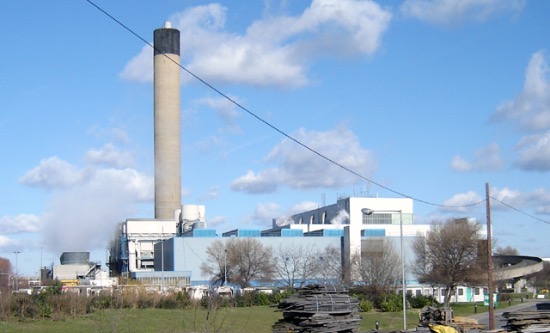
The Edmonton incinerator, in the London borough of Enfield, has been running for half a century, collecting and burning 90% of black bin waste produced by seven London boroughs. Barnet, Camden, Enfield, Hackney, Haringey, Islington and Waltham Forest depend on the incineration plant to dispose of their household waste, with most of the waste discarded being recyclable.
As the lifespan of the current incinerator comes to an end, the North London Waste Authority (NLWA), the board that arranges the waste disposal, plans to expand the site into what could be Europe’s largest incineration facility. In 2019 Enfield council declared a climate emergency and set a target of reaching carbon neutrality by 2030. A local group opposed to the project, Stop The Edmonton Incinerator Now (STEIN), estimates that the new incinerator plant would produce 700,000 tonnes of CO2 a year, directly polluting the planet, preventing climate pledges from being met and intensifying air pollution.
The NLWA claims that the £1.2bn project will tackle the issue of air pollution by using Combined Heat and Power (CHP) to capture the carbon and power nearby homes. But this is simply not viable, CHP from incineration is too carbon intensive to do this on any meaningful scale. Air pollution causes around 40,000 deaths in the UK every year, and pollution levels around the site are already above EU limits.
The incinerator is located in one of the poorest areas in England, where 65% of residents are from ethnic minority backgrounds. Last year, Greenpeace published a study finding that incinerators are three times more likely to be in deprived areas. This is environmental racism. Incinerators are dumped in working class and ethnic minority communities and never in affluent, idyllic parts of the borough such as Winchmore Hill or Cockfosters. Richer, predominantly white areas tend to escape the noise and traffic pollution and adverse health impacts attached to incineration. Councillors in Cambridgeshire rejected a proposal for an incinerator in Waterbeach due to the visual impact of the facility. Unsurprisingly, Waterbeach is amongst the 10% least deprived areas in the UK with 89% of residents from a white British background.
Increasing quantities of waste are being sent to incinerators because there is no incineration tax, meaning incinerators do not pay for the carbon they emit. More than two thirds of planned incinerators are in the north of England: in 2019, 19 of the 20 areas with England’s most deprived neighbourhoods were in the north. There is no consideration for the health and wellbeing of these people. Environmental destruction disproportionately impacts poor people, both within Britain and the world. Our climate and environmental activism must be uncompromisingly anti-capitalist, anti-racist and anti-imperialist.
Olivia Eken




